



The Access to Clean Cooking Energy and Electricity – Survey of States (ACCESS) is India’s largest multidimensional energy access survey conducted across six of the major energy-access-deprived states – Bihar, Jharkhand, Madhya Pradesh, Odisha, Uttar Pradesh, and West Bengal. The study conducted by the Council on Energy, Environment and Water (CEEW), with support from the Shakti Sustainable Energy Foundation and the Lee Kuan Yew School of Public Policy National University of Singapore, covered more than 9,000 households from 756 villages in 54 districts collecting about 5 million data points. The results from the first round of the study, ACCESS 2015, highlighted the need to look beyond connections to enable rural India’s access to modern forms of energy. In 2018, we revisited the households to understand the changes in their energy access situation over the last three years, and to study the impact of government policies during this period. The study analyses energy access for households using a multidimensional, multi-tier framework. Households are assigned tiers on the basis of their level of access to energy. Tier 0 indicates the lowest level of access and Tier 3, the highest.
Access to clean cooking energy: key findings
Since 2015, both LPG connection and the use of LPG as primary fuel have increased by more than two-fold in three years. Also, rural households using only LPG for cooking (thus eliminating adverse health impact due to indoor air pollution caused while using traditional fuels) has increased significantly from 5 per cent in 2015 to 19 per cent in 2018.
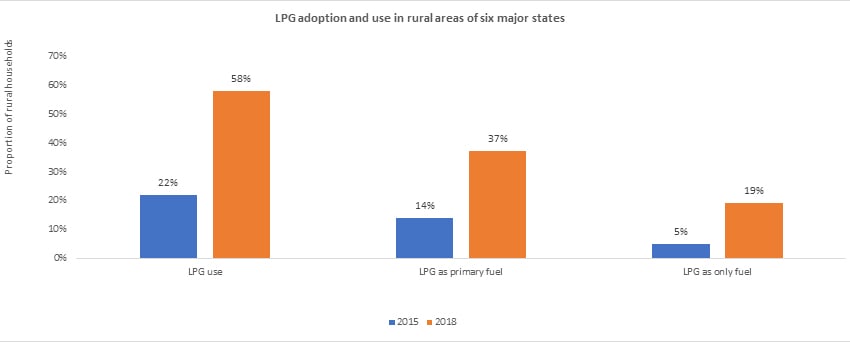
Source: CEEW analysis, 2018
Of all the rural households in six states which received LPG connections between 2015 and 2018, more than 50 per cent received them under the Pradhan Mantri Ujjwala Yojana (PMUY).
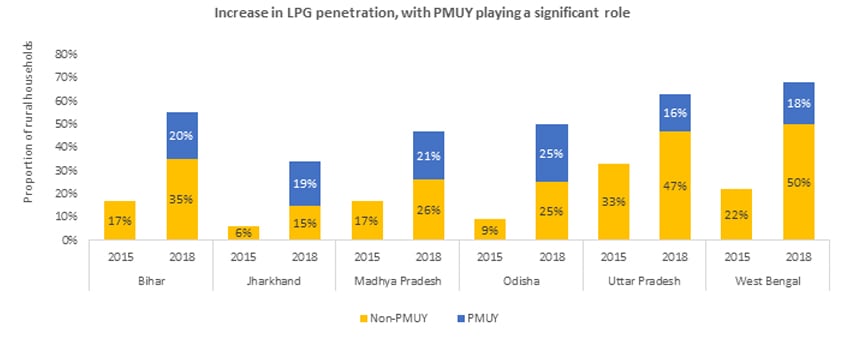
Source: CEEW analysis, 2018
Of the rural households not having LPG, 83 per cent were interested in acquiring a connection. This is a significant increase from 2015, when only 48 per cent of LPG-deprived households had expressed an interest in getting a connection. Increasing penetration of LPG in rural areas, through PMUY and otherwise, has fuelled households’ aspiration and interest in adopting LPG.
Further, rural households interested in adopting LPG were willing to pay INR 300 per month (median value) for the use of LPG for all their cooking needs. The current cost of a subsidised cylinder is ~ INR 490, which can last about 40-50 days for a family of five.
PMUY has managed to reduce the inequity in access to LPG between different social groups. Over the last three years, the proportion of SC and ST households using LPG has increased from 12 to 45 per cent and from 8 to 32 per cent, respectively. This indicates a significant improvement in LPG penetration among marginal groups.
Combined for six states, the home delivery of LPG in rural areas has improved from 18 per cent to 41 per cent of the LPG households. It remains below 50 per cent in all states but West Bengal.
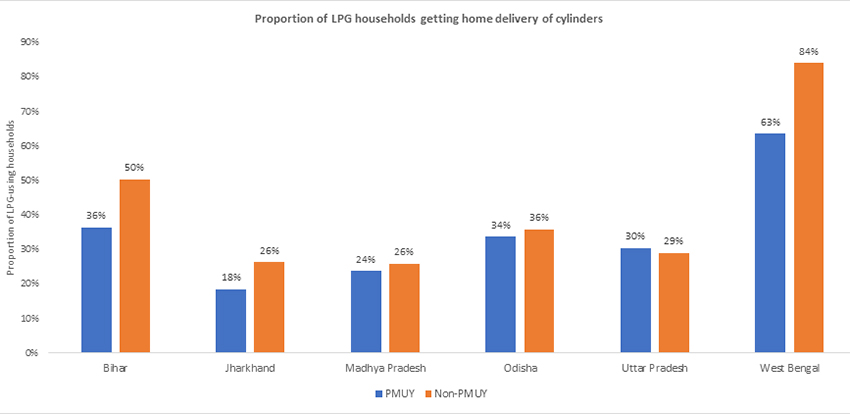
Source: CEEW analysis, 2018
For households which did not receive LPG at home, the median one-way distance travelled reduced from 6 km to 5 km, aggregated for six states.
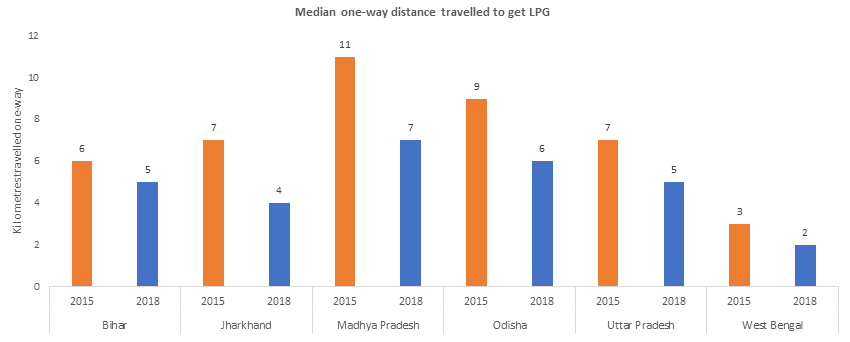
Source: CEEW analysis, 2018
Even among regular rural LPG users (non-PMUY), we note that the LPG consumption is strongly correlated with the age of the connection, potentially indicating that consumption of LPG in new connections takes time to evolve. Thus, judging the impact of PMUY through refill rates in mere span of 2-years could be premature.
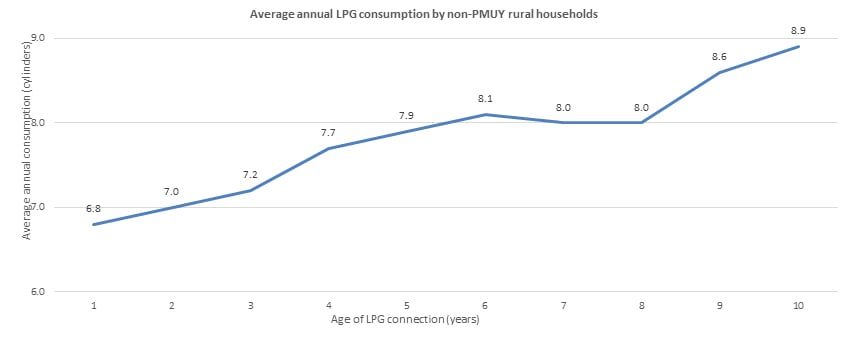
Source: CEEW analysis, 2018
Consumption of LPG is slightly higher among non-PMUY rural households. The median number of cylinders used by PMUY rural households in a year is five, while that of non-PMUY rural households using LPG for two years or less is six. Non-PMUY households with connections for more than two years use about eight cylinders a year.
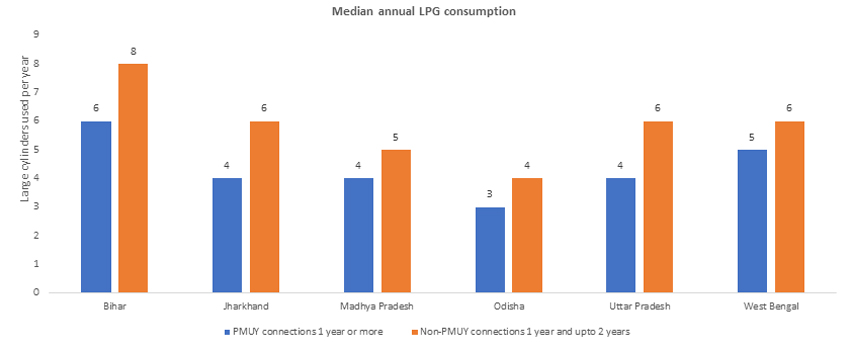
Source: CEEW analysis, 2018
About 73 per cent of non-PMUY households reported using LPG as their primary fuel and about 45 per cent of the PMUY households reported the same. Such significant proportion of PMUY households reporting use of LPG as primary fuel in a mere span of two years is commendable.
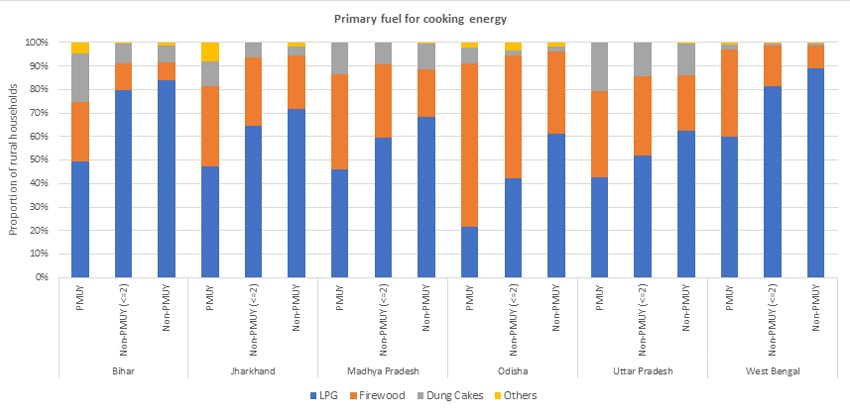
Source: CEEW analysis, 2018
A higher proportion of PMUY households stack LPG with traditional biomass. However, even among non-PMUY households, stacking only reduces with age of the connection.
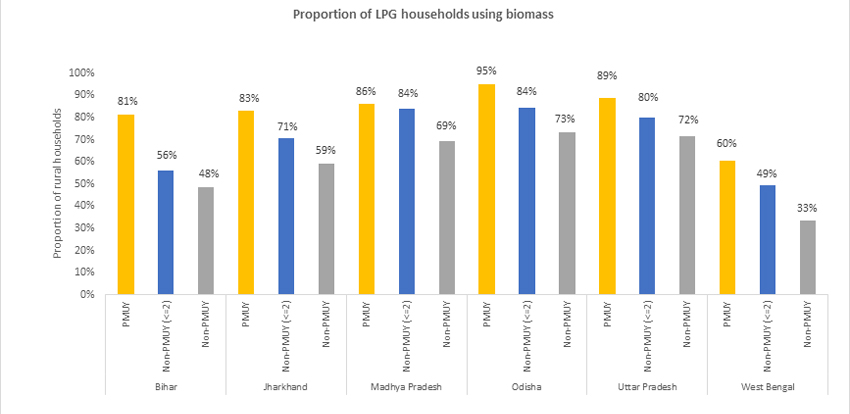
Source: CEEW analysis, 2018
About 63 per cent of PMUY households (as compared to 76 per cent of non-PMUY households) are satisfied with the LPG situation in their household. The most common reasons for dissatisfaction among households is that LPG is expensive to use, and it is too far to procure.
For more details on the ACCESS study, please contact: [email protected]